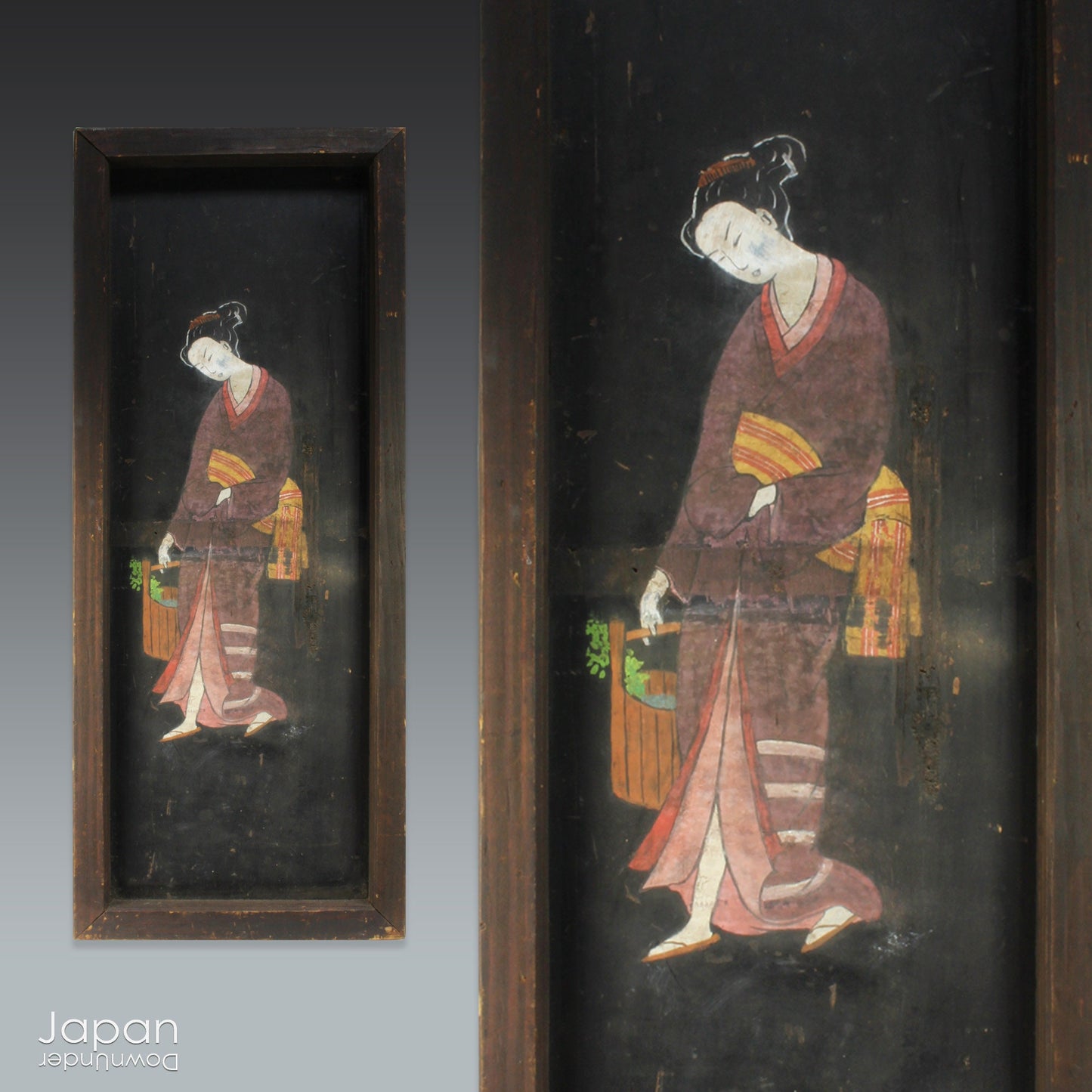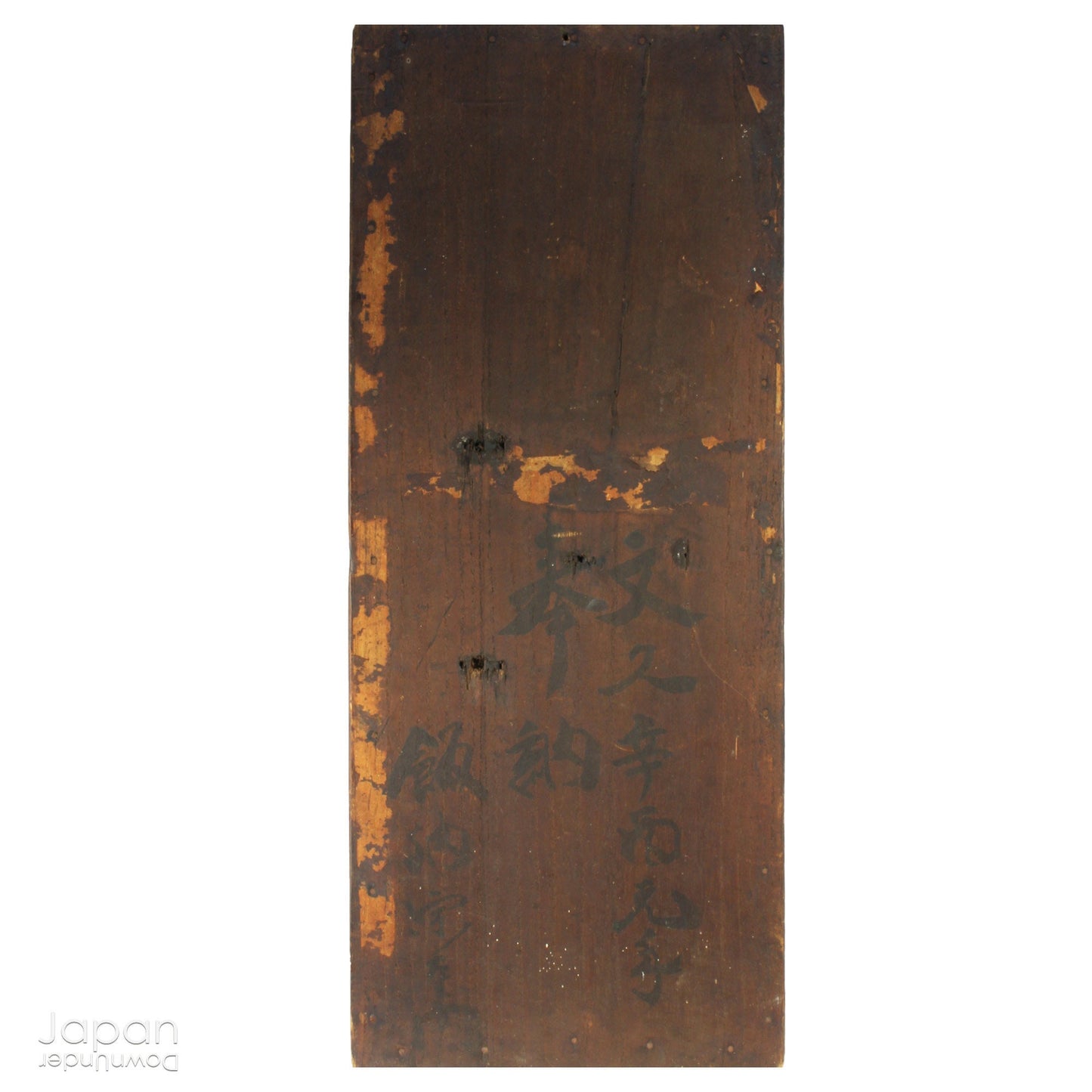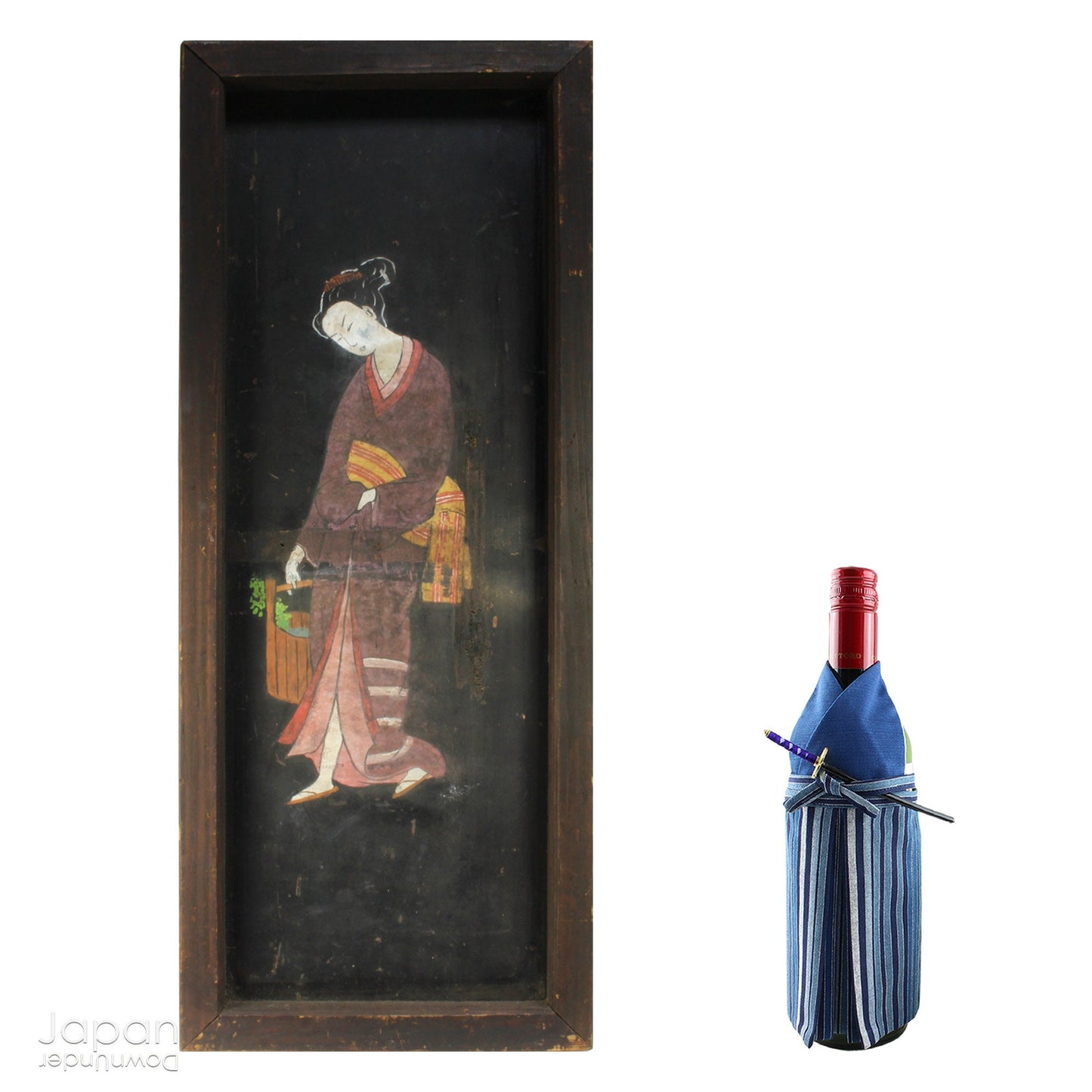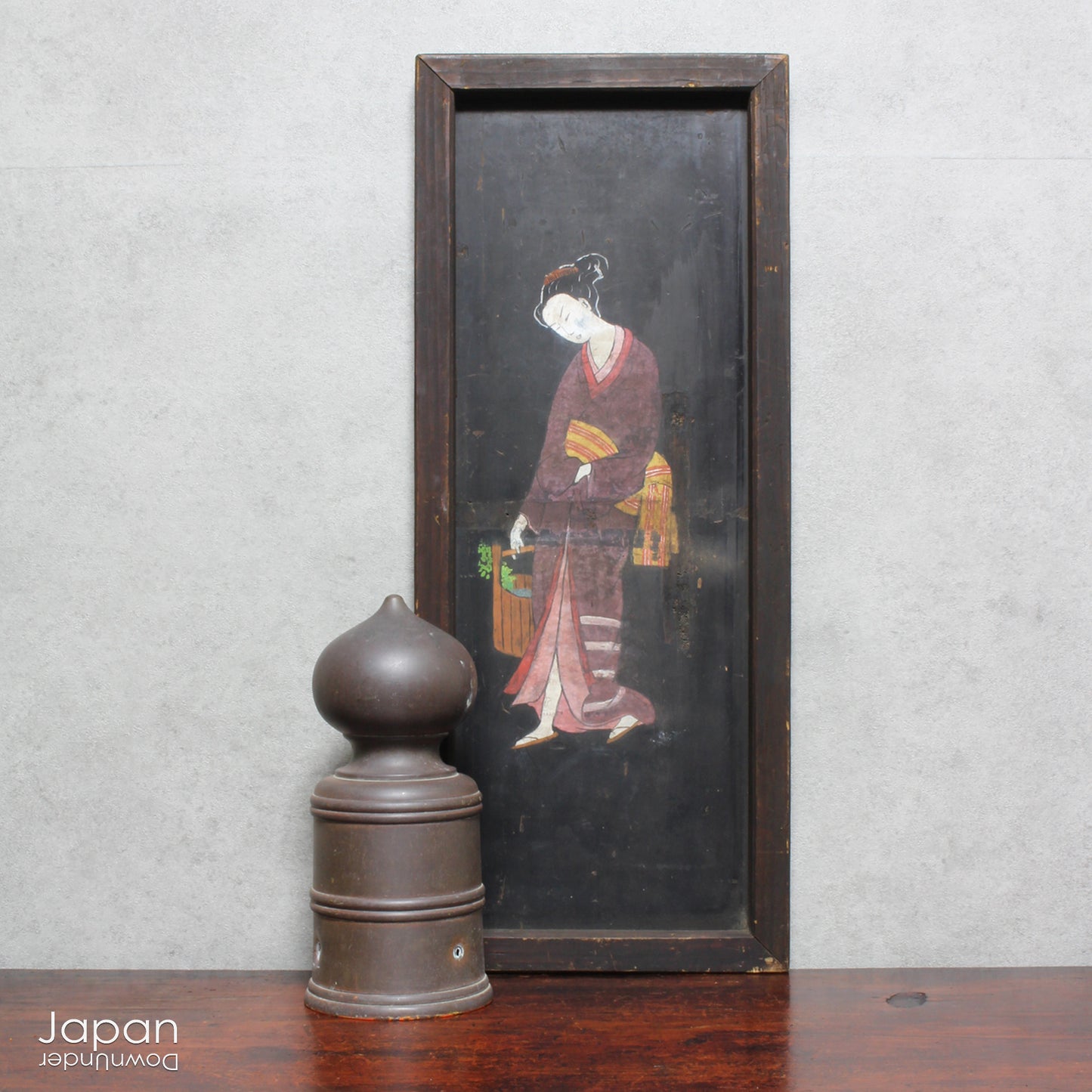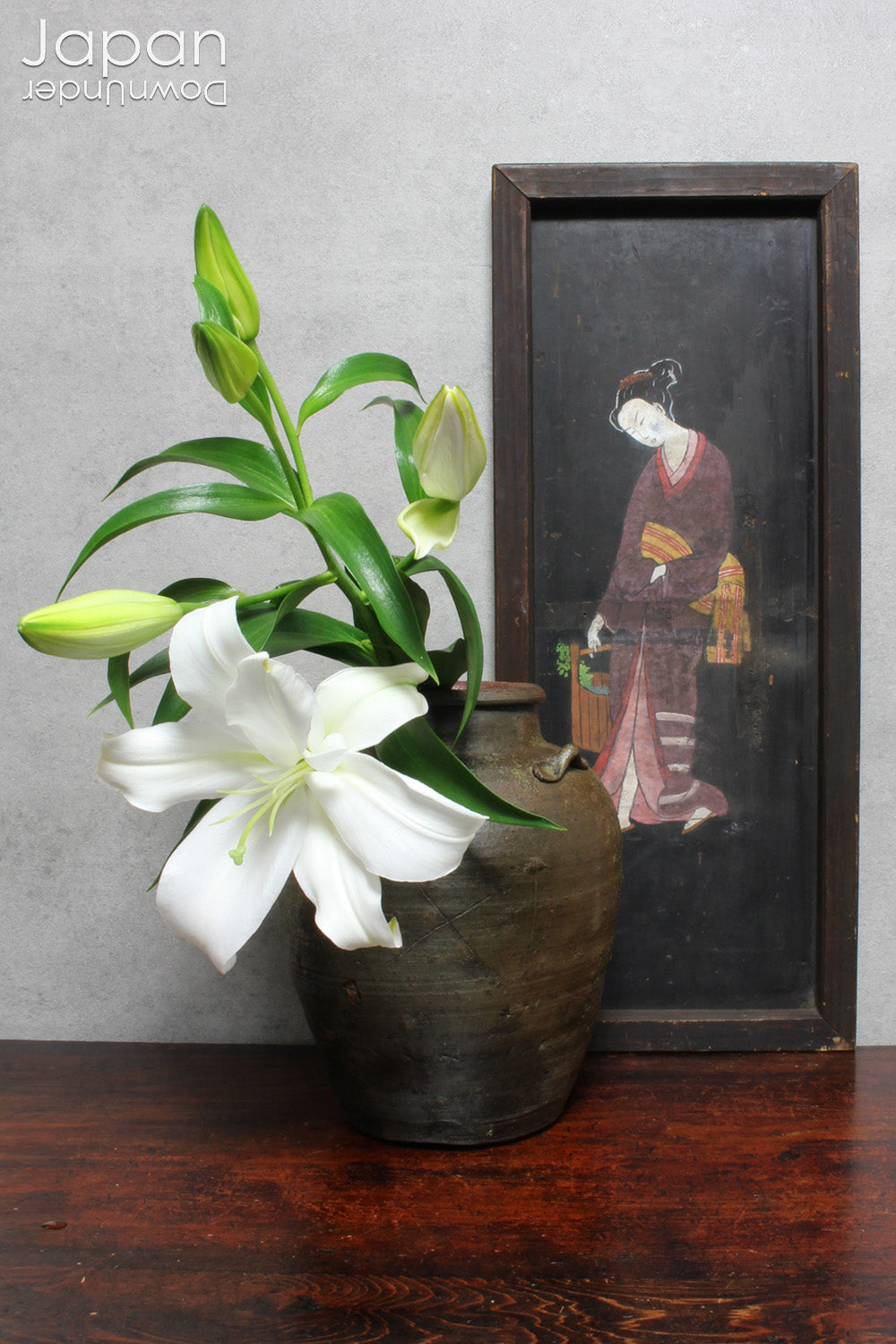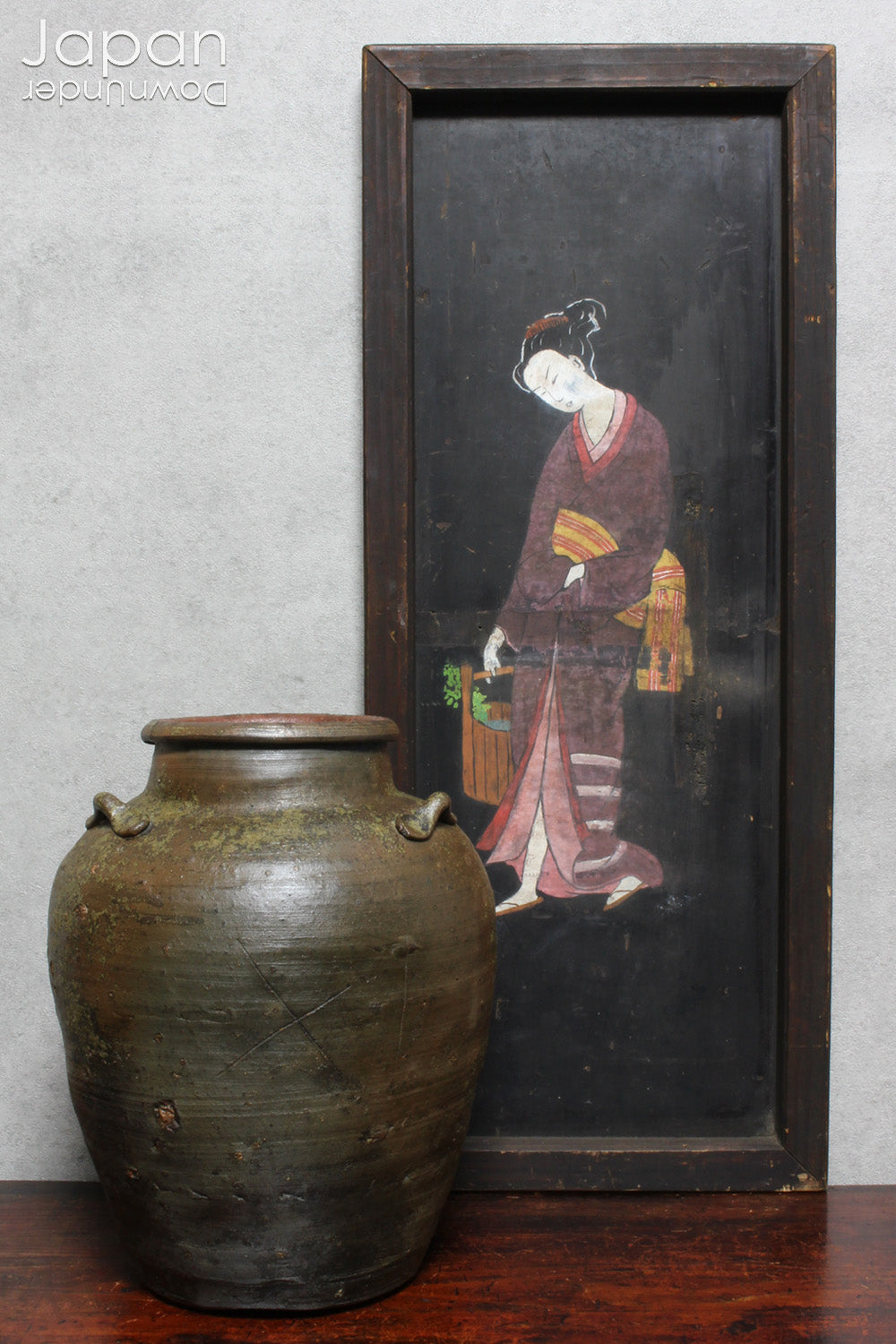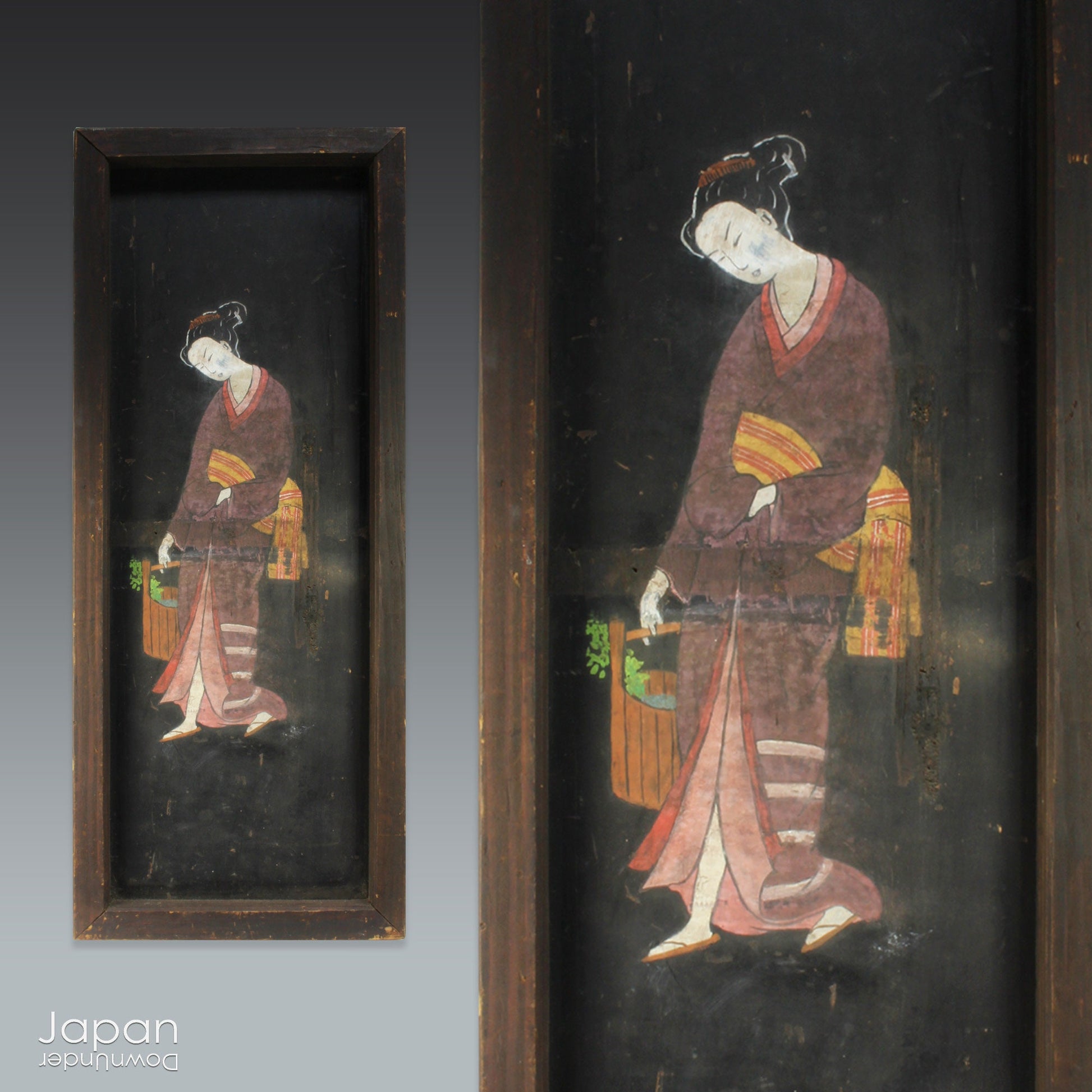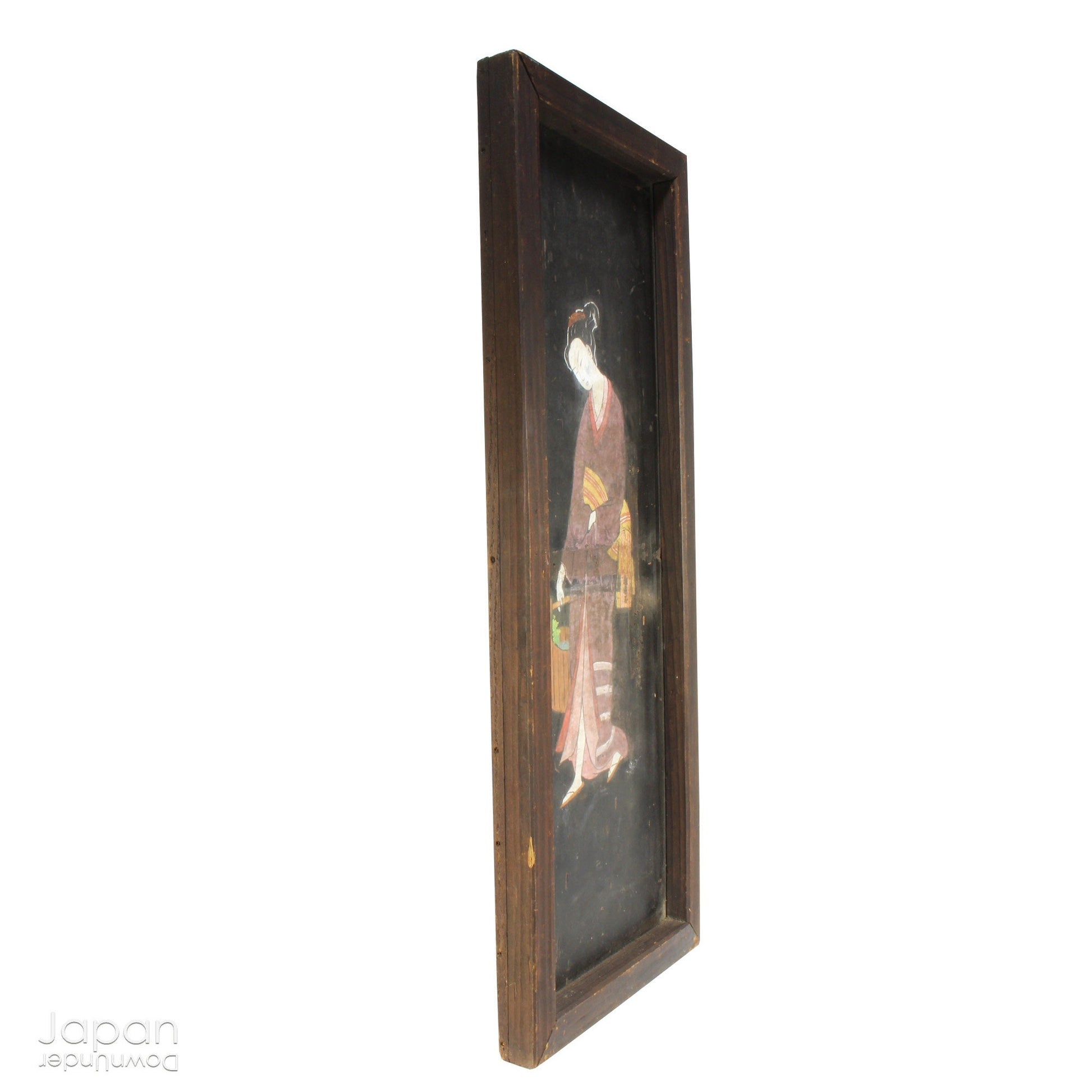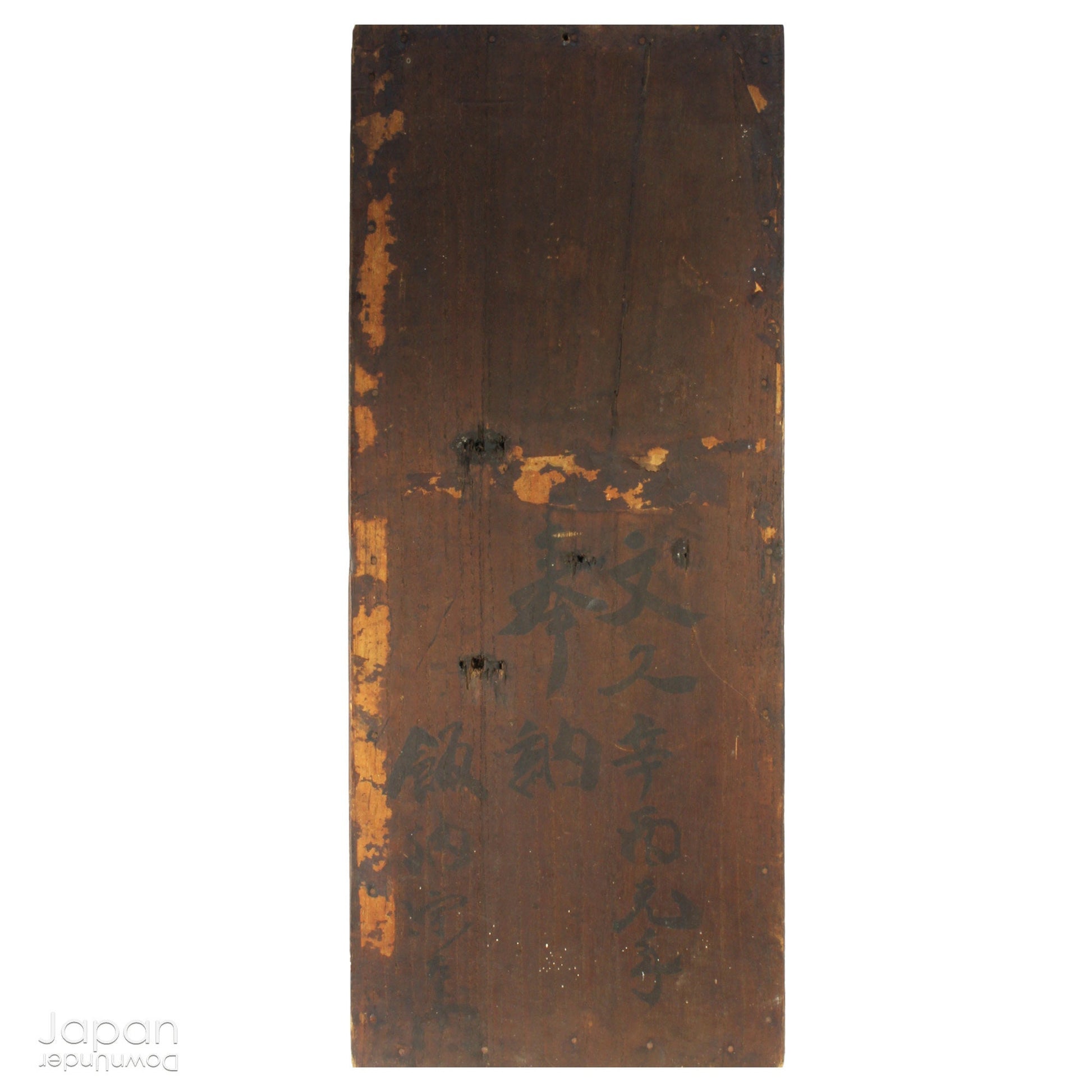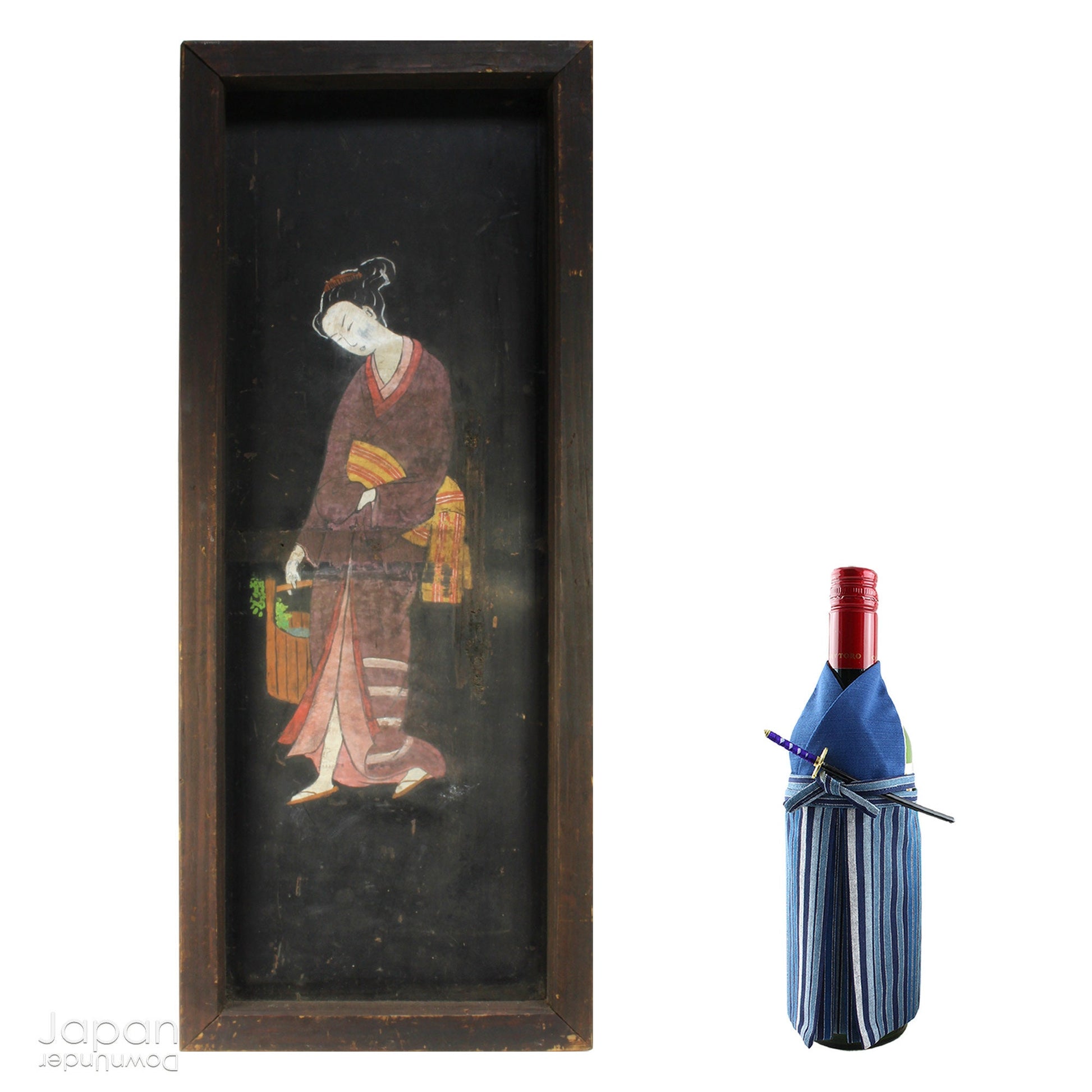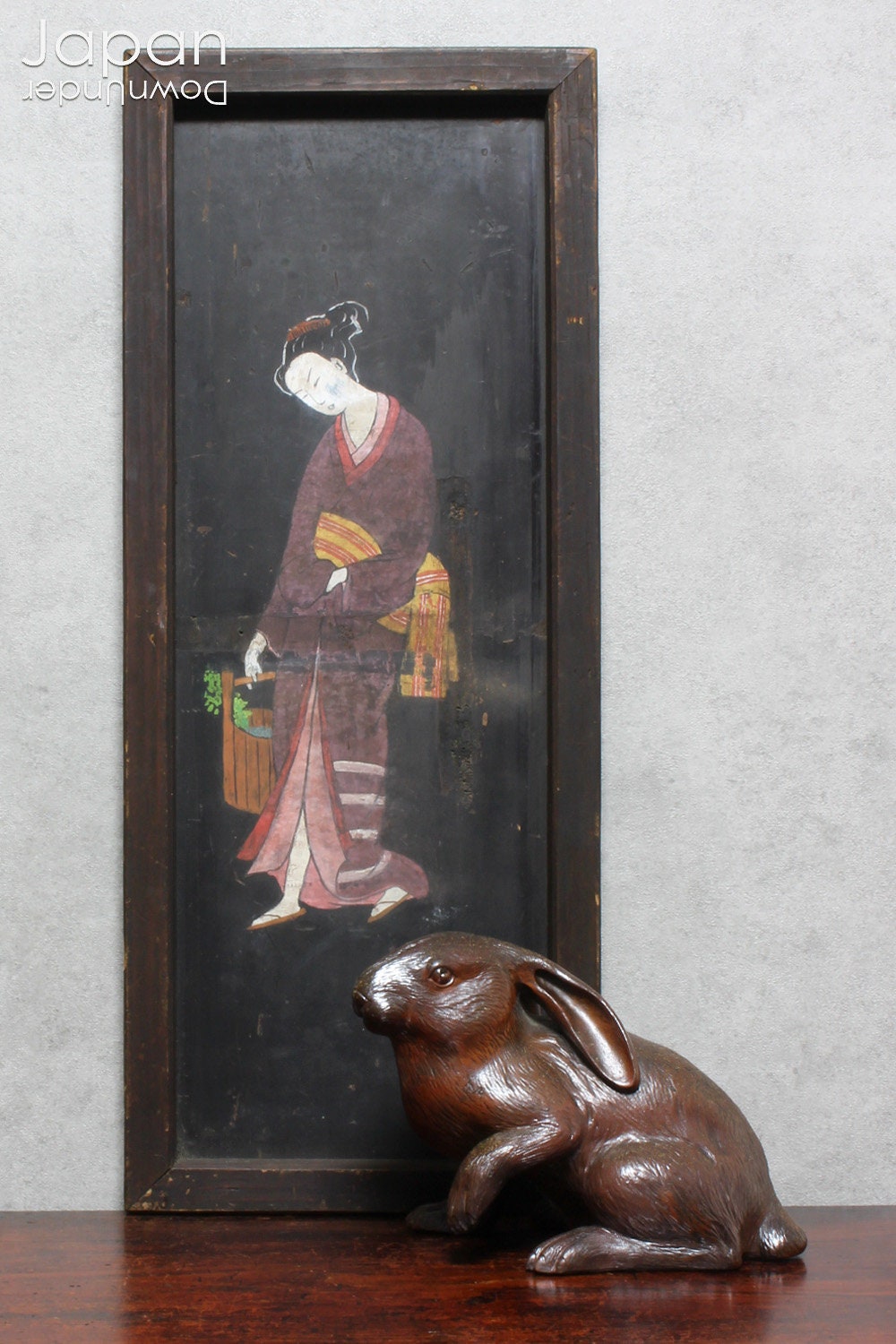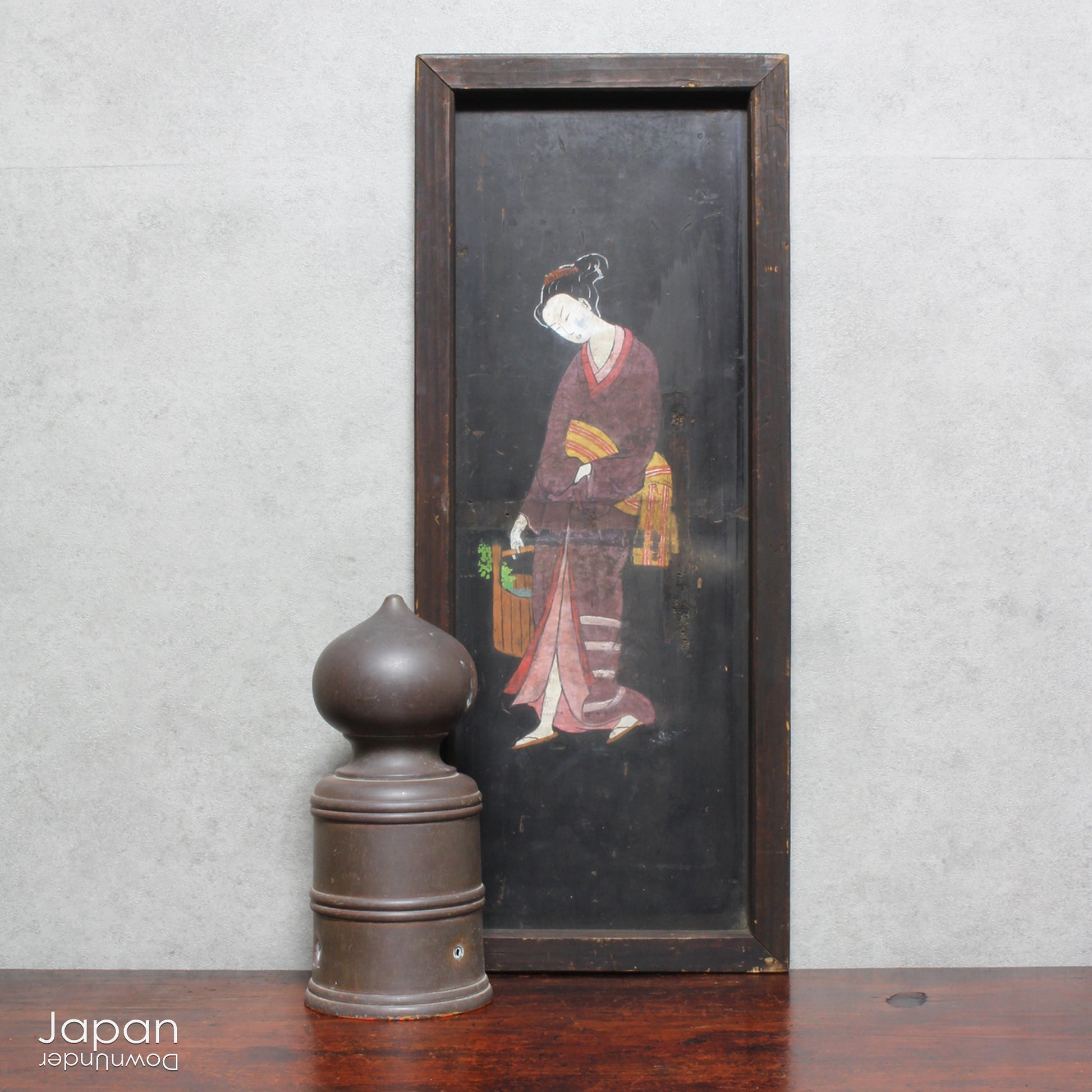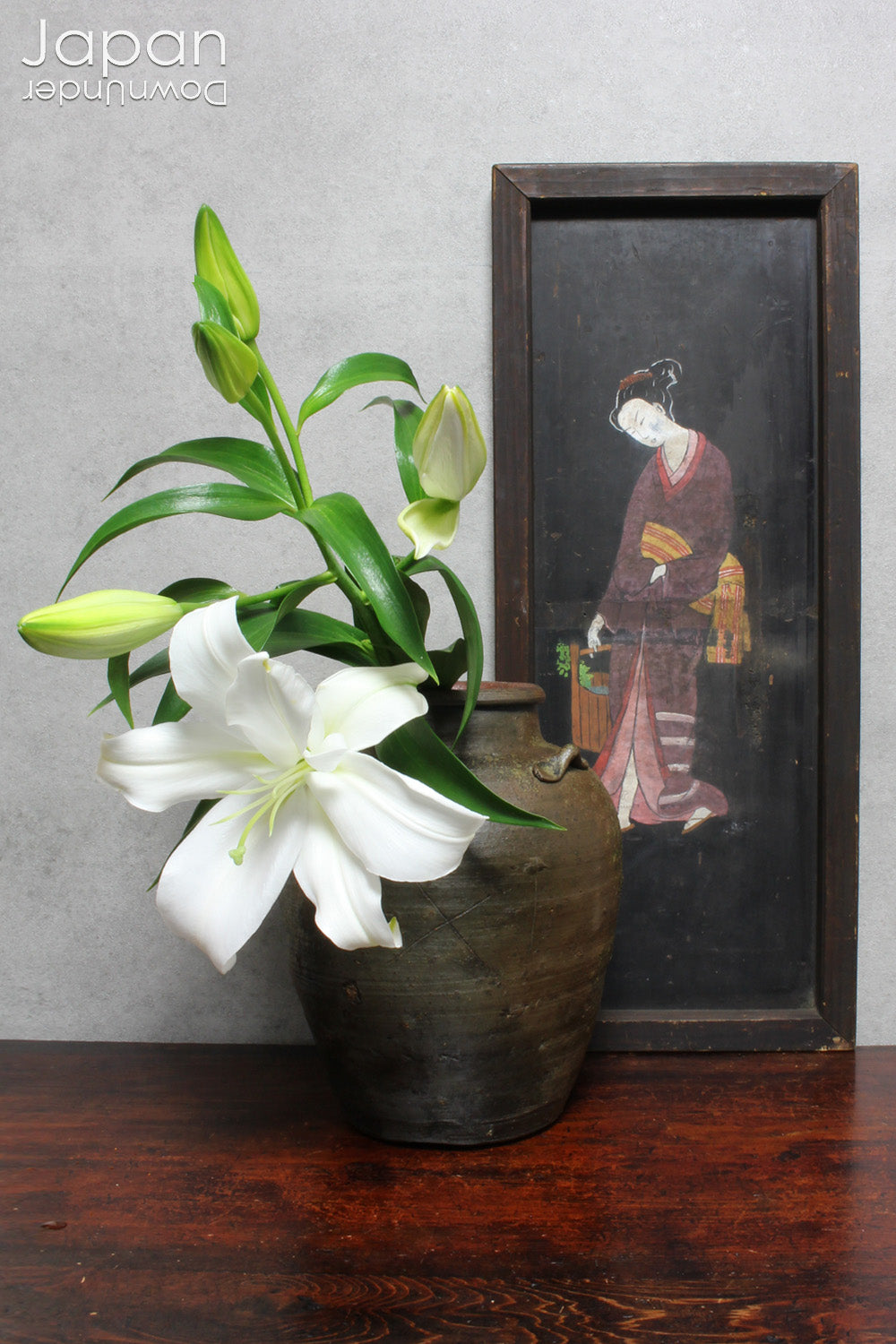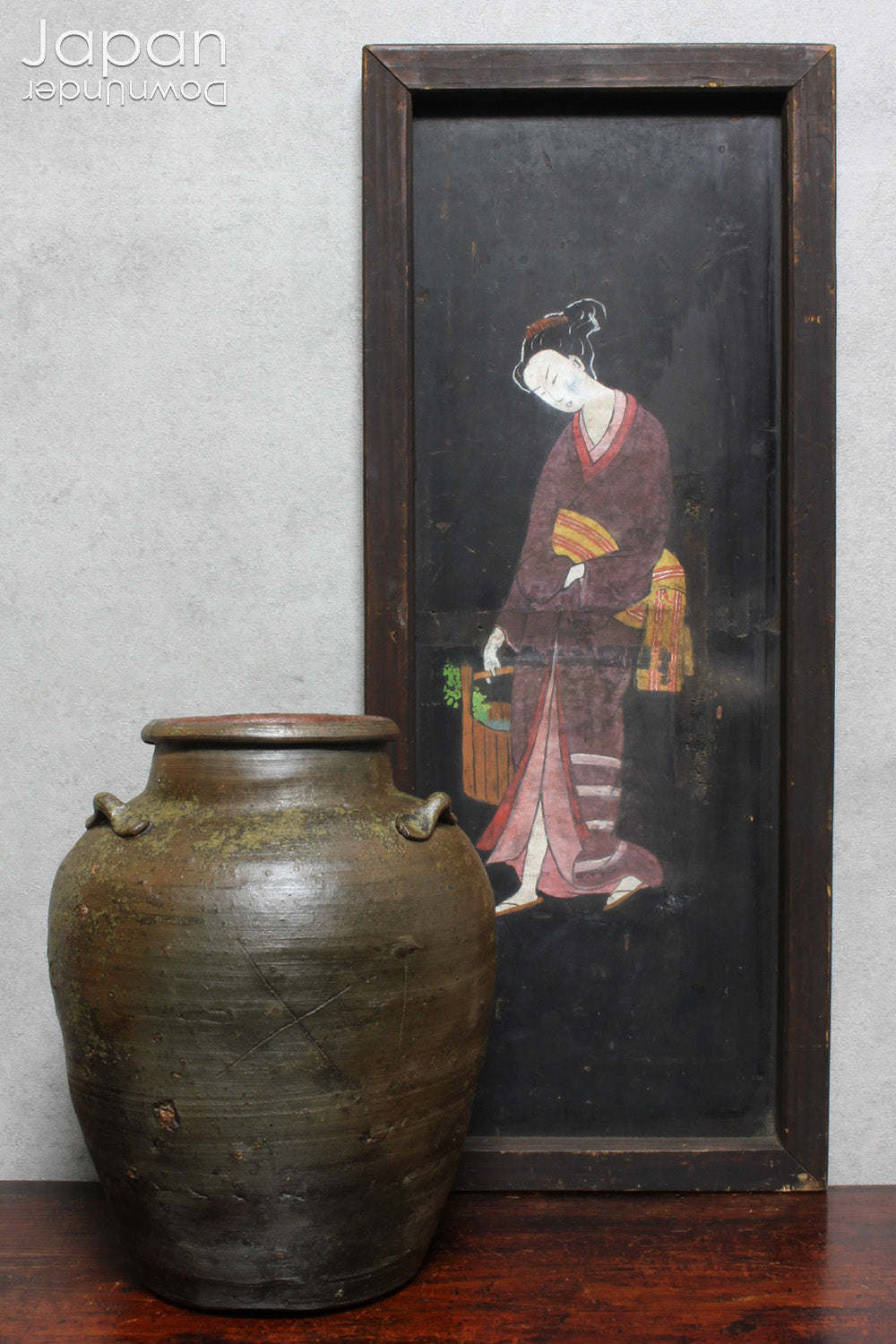My Store
large japanese antique votive plaque - beautiful woman in japanese kimono painting - religious wall art
large japanese antique votive plaque - beautiful woman in japanese kimono painting - religious wall art
Couldn't load pickup availability
Love Japanese Style Like We Do
A captivating 19th-century Japanese folk art painting, this large ema features a graceful woman in a traditional kimono, rendered in delicate mineral pigments. Originally created as a shrine offering, this striking piece bridges the realms of spirituality and artistry, bringing timeless cultural elegance into any interior space. A rare and beautiful treasure for collectors and admirers of Japanese history and aesthetics.
Oversized ema such as this began to appear in the late Edo to early Meiji periods. Unlike their smaller, purely devotional counterparts, these larger plaques functioned as both sacred offerings and public artworks. Often displayed in special ema halls - precursors to modern galleries - they reflected evolving artistic sensibilities of the time.
The subject of this ema is a bijinga painting - celebrating feminine beauty and grace in posture, attire, and custom. The woman, clad in kimono, is depicted carrying a wooden bucket of freshly gathered greenery, presumably to be placed in her home's tokonoma (alcove). The image is painted directly onto a long, narrow, framed wooden board with elegant simplicity.
Inscribed on the reverse are historical notations. From right to left, you can faintly make out “Bunkyū Gannen” (文久元年), indicating the first year of Bunkyū - equivalent to 1861 during the late Edo period. The word “Hōnō” (奉納) suggests dedication to the gods, followed by the name of the individual who offered this artwork to the shrine.
Though it bears natural signs of age - minor dents, faded pigment, scratches, and small holes from previous mounting - this ema remains structurally sound and visually compelling.
A genuine and scarce piece of Japanese folk art, perfect for historical decor or collection.
- measures around 59 cm (23.2”) tall x 24 cm (9.4’) wide x 3 cm (1.2”) deep.
- weighs 680 gm
SHIPPING INFORMATION
- please read our shipping policy.
- we use recycle packaging wherever possible and wrap for safety, rather than appearance!
ABOUT OUR VINTAGE, ANTIQUE AND OTHER ITEMS
We list pieces we feel are worthy of display. There may be scratches, dents, fading and signs of wear and tear. We try to explain the condition of each item exactly, but may miss something.
Information regarding the item and it’s age is obtained from dealers and our personal research. We do our best to give you the correct information but please be aware that we cannot guarantee this information.
Please message us prior to purchase with any questions you may have about our products.
EMA
These votive plaques date to the reign of the Emperor Suinin. It was this ancient leader that instituted the use of haniwa clay figures in lieu of live burials when tombs were built for the wealthy. The horses (shimme) that were previously placed in the grave then came to be gifts to shrines. They were thought to be horses for the gods to ride. It wasn't long before these ‘gift horses’ became more trouble than they were worth. The next logical step was making a replica of these horses and so the wooden ema votive plaque came into being. Ema, literally means picture horse.
The majority of ema were wood plaques, simply fashioned in the shape of a two dimensional gabled roof stable with a prancing steed or two inside. Gradually they came to be painted with animals of the zodiac, good luck images, deities, such as Kannon and Jizo and other specific icons depending on their intended purpose.
Prayers and wishes are written on the back of the ema and they are left hanging at the shrine, where the gods are believed to receive them. They are then ritually burned at special events, freeing the wish from the writer.
LARGE EMA
During the Edo and Meiji eras another type of very large ema evolved. Although these ema had the spiritual function of the small ema, they were also objects of display and advertisement. They were a kind of spiritual and social exchange that donors performed for both the gods and the viewing public.
Large ema, were generally commissioned by donors from professional artists, but small ema were painted by individual donors or by craftspeople who mass-produced ema for sale to shrine and temple visitors. Large scale ema, like their smaller version, were painted directly onto a wooden board. The larger ema were sometimes surrounded by a frame, or took the shape of the triangular horse stable-shaped roof of the small ema. Small ema were periodically burned but large ema were not removed from their display spaces.
The combination of increased size and more frequent donations of large ema spurred temples and shrines to create additional spaces for display called ema halls, or emado. These halls became an art gallery-like space within the religious complex where ema were on view to all visitors and ema became a publicly accessible art form. Notable ema and ema halls were even mentioned in travel books and other texts from the Edo era. Religious institutions did not actively curate their collection of ema and displays grew through unorganized additions initiated by the donor, leaving a permanent advertisement for the artist and the donor.
Large ema catch many of the defining characteristics of art in the Edo and Meiji period. They are religious objects as well as art objects. They provided donors, artists, and religious institutions with an opportunity to advertise devotion to God, miracles, and their own skills.
Share
